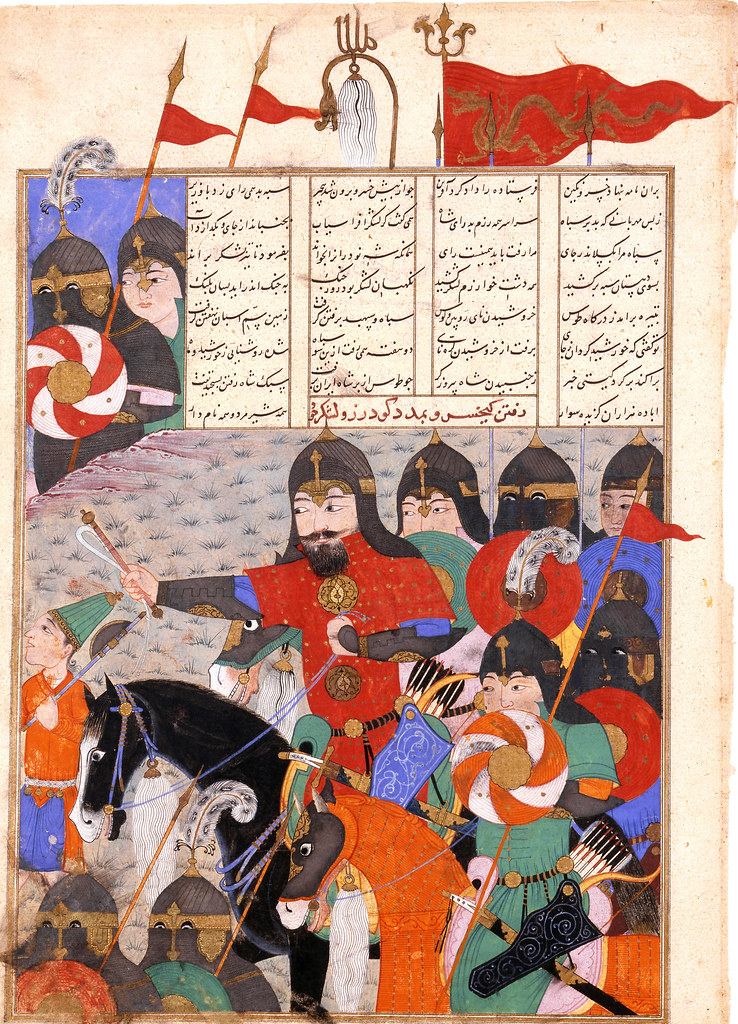Kay Khusraw Marches to Gudarz’s Rescue,
Chapter 13f: The Twelve Rukhs
Big Head Shahnama, Turkmen, Iran, 1494
David Collection, Copenhagen

A larger image of Kay Khusraw Marches to Gudarz’s Rescue, Big Head Shahnama, Lahijan, Iran, 1494. David Collection, Copenhagen.
Miniature from a copy of Firdawsi’s Shahnama. “Kay Khusraw Marches to Gudarz’s Rescue”
Iran, Lahijan; 1494
Leaf: 35 × 24.3 cm
The ways the figures are depicted in this miniature justify the manuscript’s designation: the “Big Head Shahnama.”
Kay Khusraw (with a whip), his page [Peyk] on foot (with an axe and a pointed hat), and the heavily armed Iranian cavalry and infantry are painted in a highly monumental and original manner. The cropping of the picture is unconventional, whereas the bold and at times garish colors are typical of the entire manuscript and to some extent of Turkmen painting in general.
The miniature is filled with realistic details – weapons, shields, armor, and various types of helmets – but also has more special features, such as the pennant painted with a dragon and the dragon ensign with the inscription “Allah,” reversed.
Inv. no. 42/2006
Various nomad Turkmen groups were among the many Central Asiatic peoples that were forced westward before the Mongol advance in the first half of the 13th century. At the beginning of the 15th century, some of them were able to occupy the Timurids’ lands in the west. The Aq Qoyunlu (white sheep) Turkmen became the region’s leading power for a short time under the great commander Uzun Hasan, whose dream of an empire was stopped by the Ottomans in Anatolia in 1473. After his death, the realm quickly disintegrated because of dissent among his successors and pressure from the Ottomans and Iran’s new power, the Safavids.
Source: David Collection, Copenhagen
Back to Turkmen Soldiers from the Shahnama by Firdawsi, "Big Head Shahnama", Gilan, Iran, 1494

